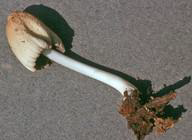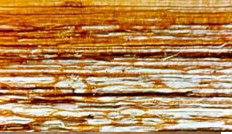When it comes to damp problems in the home, one of the most prominent issues is how the damp affects timber. Identifying wood rot, whether it is dry rot or wet rot, can vary in difficulty. This is primarily because of the vast range of different fungi which can thrive and grow on moist timber.
Whilst understanding the specific species of fungus affecting your timber might seem unnecessary, identifying wet rot or dry rot is actually a big part of the treatment process. Not only is it important when deciding on the most effective treatment, but it’s also essential to understand the size, depth and extent of the timber damage. As different wood rots have different effects on the timber where they grow, it’s important to have a strong knowledge of the signs and symptoms that are associated with each common wood rot species.
As damp proofing specialists who have been operating for over 15 years, the team here at Garratt’s Damp & Timber are experienced in identifying and treating wood rots of all shapes and sizes. Our qualified surveyors can quickly and effectively assess the situation in your property, advising you on the best course of action.
Using this knowledge, we have compiled a detailed guide on how to identify dry and wet rot. This way, you can easily understand the extent of your problem and act accordingly to keep your timber safe and stable - our comprehensive guide has all the answers you need.
If you would prefer to speak to a professional, please don’t hesitate to get in touch and book a survey. Our team are more than happy to help.
| Identifying Rot | Timber attacked/Growth | Damage | Signs |
|---|---|---|---|
| Brown Rots: A category of dry and wet rots
|
|
|
|
White Rots: A category of wet rots |
|
|
|
| Dry Rot
(Serpula Lacrymans)
|
|
|
|
| Cellar Fungus Wet Rot
(Coniophora Puteana)
|
|
|
|
| Mine Fungus Wet Rot
(Fibroporia Vaillantii)
|
|
|
|
| No Common Name Wet Rot
(Phellinus Contiguus)
|
|
|
|
| No Common Name Wet Rot
(Donkioporia Expansa)
|
|
|
|
| Oyster Fungus Wet Rot
(Pleurotus Ostreatus)
|
|
|
|
| No Common Name Wet Rot
(Asterostroma spp)
|
|
|
|
The following wet rots will not affect timber but do indicate damp conditions that may lead to serious fungal attacks in the future.
Ink Cap Fungus Wet Rot. Coprinus Domesticus

Ink Cap fungus is sometimes referred to as plaster fungus as it is often seen growing from plasterwork
- It may also grow on other substrates but it does not harm timber
- It is indicative of very damp conditions that may lead to the growth of other timber attacking rots
Elf Cup Fungus Wet Rot. Peziza Spp

- Elf Cup fungus grows from carpet, brick, mortar, plaster and many other substrates. However, it does not harm timber
- Like Ink Cap, it is indicative of very damp conditions that may lead to the growth of timber attacking rots further down the line















